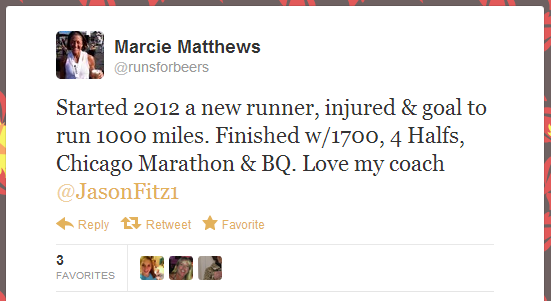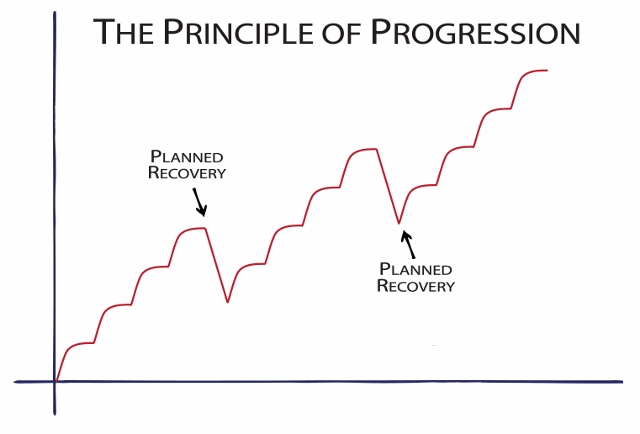One of my favorite aspects of coaching is when I work with runners who have long-term goals. And when training is planned long-term, the results can be extraordinary:

Since I know what’s coming up in 3 months, 6 months, and even 9 months, I can build not only an effective training cycle, but plan a long-term approach to all of your running goals.
Even if runners aren’t sure of what races to run, I help them plan their seasons with strategic goal race selection and scheduling tune-up races.
This big-picture strategy has been enormously helpful for my athletes because we’re not making short-sighted decisions, like rushing workouts, mileage, or long runs to prepare for a race.
Instead, we spend the right amount of time in each training phase, plan strategic rest and recovery, and make sure we’re ready to race on the big day.
When running is planned well, it goes something like this:

Each jump up on the graph represents a training stress – more mileage, harder workouts, or perhaps more challenging long runs – and each dip in the line represents rest and recovery.
It’s a “two steps forward, one step back” approach that I’ve used with thousands of runners with great success.
But what happens when you stay in a single training phase for a really long time?
That brings us to Episode 16 of Q&A with Coach.
Is there such a thing as too long of a base phase?
Now that fall is here, many runners are in the middle of their running season, approaching a series of fall races in the coming months.
But today’s question is for those runners who don’t have any races planned. If no races are planned and you stay in a single phase of training for a long time, is that a bad thing?
First, I think it’s helpful to define our terms:
Training cycle: this is simply the duration of your training program. For most runners, it’s somewhere between 12-20 weeks.
Base phase: the first part of a training cycle, the goal in this period is building endurance and preparing the body for harder workouts later in the training cycle.
Competition phase: the middle part of a training cycle, the goal in this period is to refine your fitness so you’re closer to your race goals. Workouts become more specific to the race you’re training for and therefore, more difficult.
This is also when most races are run. If you’re training for a shorter race like the 5k or 10k, you can race more frequently as you get closer to the goal or “A” race.
Taper / Peaking phase: this is the final part of a training cycle when mileage decreases and intensity is maintained so you can run at your best during your goal race.
Now that we understand the different phases of training that make up most training plans, can we stay in a single phase for too long?
That’s exactly what Francis wanted to know. His question is:

For the answer, watch episode 16 of Q&A with Coach:
Show notes:
- :30 – What exactly IS base training?
- 1:25 – Dad joke 🙁
- 1:45 – How long should base training be?
- 2:10 – The drawbacks of base training
- 2:45 – How to maintain neuromuscular fitness
- 3:30 – The #1 reason to keep base training the right length
- 4:25 – How to be comfortable being uncomfortable
- 5:25 – My personal struggles with “perpetual base training”
- 6:20 – How to plan an effective season
Thanks Francis for a great question – and good luck with your running!
In a follow-up video about base training workouts, you can see that the type of workouts that we do in this phase of training are specific. But there are so many other types of workouts to do!
Ultimately, base training workouts must evolve into more challenging, race-specific workouts.
Do you have any questions about running? Find me on Twitter and ask with the hashtag #RunQuestion!